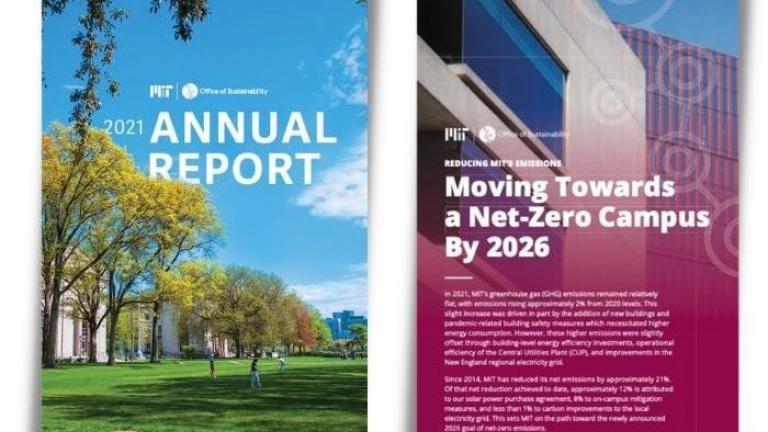
The 2021 academic year provided a test in the practice of how to accomplish critical sustainability and climate goals while supporting a campus facing a massive disruption—currently from a public health pandemic and community disbursement. Despite these disruptions, the Office of Sustainability forged ahead and sought to strengthen MIT’s commitment to climate and sustainability and work in partnership across the Institute to formulate and actualize our commitments. The Office of Sustainability 2021 Annual Report and the Progress towards MIT's Greenhouse Gas Goal 2021 highlights the work of the Office of Sustainability on climate resiliency and mitigation, safe and sustainable labs, materials management, designing out waste, and food systems.
Since the publication of Fast Forward: MIT’s Climate Action Plan for the Decade in May 2021, MITOS now has a new set of campus climate commitments and metrics to inform and implement. The two ambitious greenhouse gas reduction targets are net-zero campus by 2026 and the elimination of direct campus emissions by 2050.
Report Highlights
-
Efforts to connect across scales of impact spanning from individuals, campus, city, state, and globe
-
Progress on greenhouse gas reductions and new targets
-
Multiple new data sets and visualizations now available in the DataPool
Interesting changes during COVID-19 Pandemic
-
Waste had been trending down since 2014; however, when the campus shut down in March 2020, there was a marked decrease in waste removed
-
The Sustainability Incubator Fund allowed campus researchers to study the supply chain, lifecycle use, and disposal processes of PPE. They recommended bulk purchasing and developed a PPE Demand Calculator to right size ordering and ensure access
-
Electricity use declined slightly at the building level, with fewer people using electricity in offices, labs, and residences. However, natural gas use (for heating/cooling) increased slightly to meet the higher building ventilation rates activated to reduce COVID-19 risk
What to look forward to in 2021-2022
-
Overseeing and communicating progress on the 14 Campus Commitments in Fast Forward
-
Expanded data collection and visualizations in the Data Pool
-
Integrating an environmental justice lens into day-to-day work
-
Many more, the report highlights additional new projects in 2022
Read more in the Office of Sustainability 2021 Annual Report and Progress towards MIT's Greenhouse Gas Goal 2021






